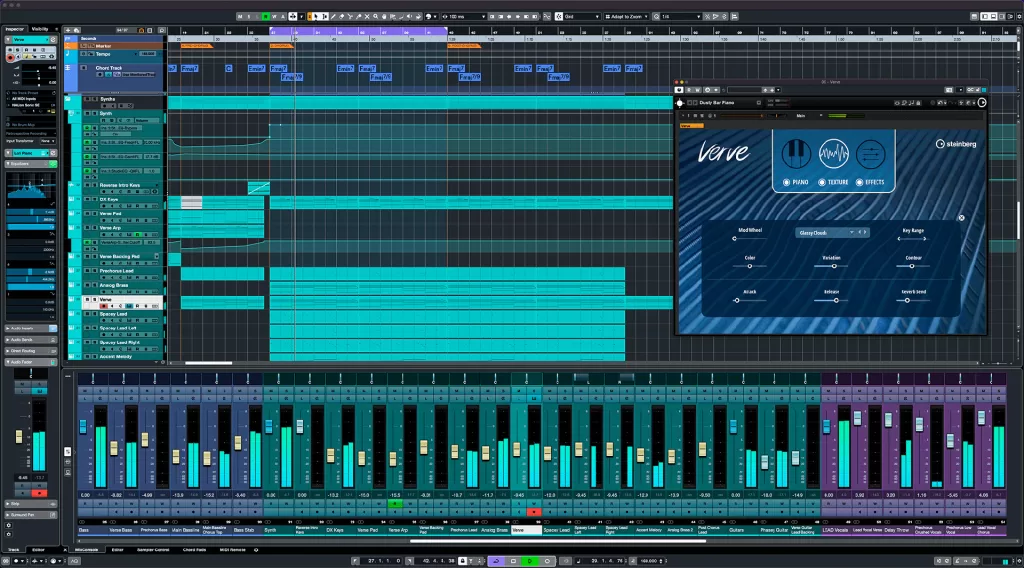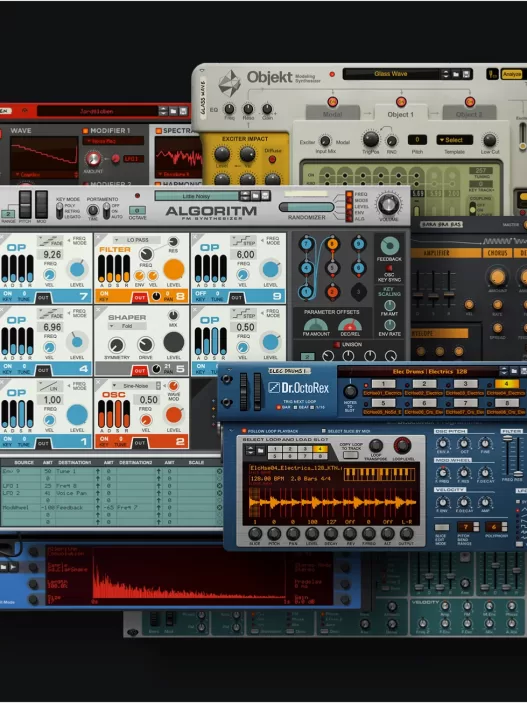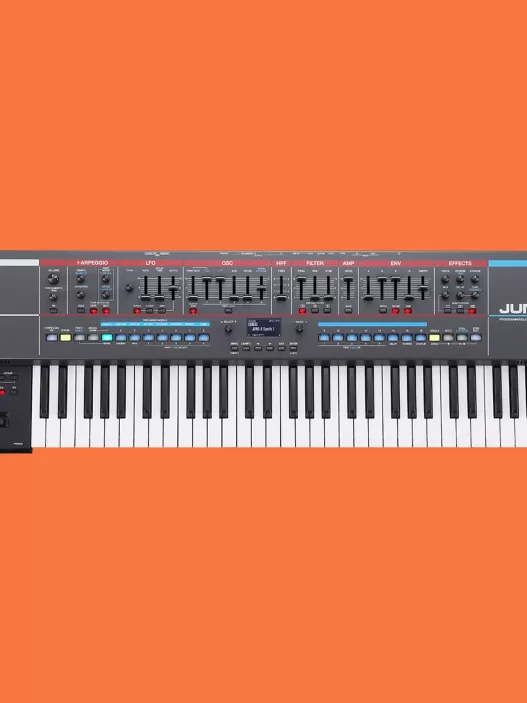
When it comes to digital audio workstations (DAWs), there are plenty of options on the market, each claiming to be the “best” for music production. But ask any seasoned music producer, composer, or audio engineer, and you’ll often hear one name stand out: Cubase. Developed by Steinberg, this powerhouse DAW has been around since 1989 and has evolved into a full-fledged production suite trusted by industry professionals across the globe.
So, why does Cubase still hold its ground in an era of fierce competition? Let’s break it down and see why Cubase is still the go-to DAW for serious music production, mixing, and mastering.
1. Industry-Grade Audio Recording & Editing 🎙️
Cubase isn’t just good at recording audio—it’s exceptional. Whether you’re tracking a full band, recording solo vocals, or capturing a podcast, Cubase delivers pristine audio quality and a workflow that’s as intuitive as it is powerful.
Why it rocks:
- Unmatched audio engine: Clean, professional-grade sound with minimal latency.
- Unlimited audio tracks: No restrictions, whether you’re recording a small project or an orchestral score.
- Advanced comping features: Quickly piece together the perfect take with lane comping.
- VariAudio: Steinberg’s answer to Melodyne—edit pitch and timing like a pro without artifacts.
Example:
A singer-songwriter tracking their next single in Cubase can record multiple vocal takes, use VariAudio 3 to correct pitch, and layer harmonies effortlessly.
2. Superior MIDI Capabilities for Production 🎼
If you’re a producer who loves working with virtual instruments and MIDI, Cubase is MIDI heaven. From complex orchestral arrangements to electronic beats, Cubase makes MIDI editing a dream with deep, yet intuitive control.
Key features:
- Key Editor: Industry-leading piano roll for seamless note input and editing.
- Drum Editor: Perfect for building beats and drum sequences quickly.
- Chord Track: Suggests harmonic possibilities, allowing producers to experiment effortlessly.
- MIDI Effects: Arpeggiators, chord generators, and more to spice up your productions.
Example:
A film composer scoring a cinematic trailer can use Expression Maps to control orchestral articulations in real-time—without tedious automation lanes.
3. Virtual Instruments and Sound Libraries That Slap 🔥🎵
Cubase ships with an impressive array of built-in instruments and sound libraries, covering everything from analog synth emulations to high-quality acoustic samples. Plus, Steinberg’s VST standard means seamless integration with third-party plugins.
Some built-in gems:
- HALion Sonic SE: A deep sample-based workstation covering everything from pianos to pads.
- Groove Agent SE: Your personal drum machine with pro-level acoustic and electronic kits.
- Padshop 2: A granular synth for otherworldly textures and sound design.
Example:
An EDM producer looking to create futuristic soundscapes can dive into Padshop 2, layer lush synths, and build atmospheric textures without needing additional plugins.
4. Mix Like a Pro with Advanced Tools 🎚️
Mixing in Cubase is like having an entire professional studio within your computer. The MixConsole offers analog-style workflow with digital precision, featuring everything you need to craft polished mixes.
Mixing perks:
- Channel Strip: High-quality EQs, compressors, and saturation built right into each track.
- Control Room: Ideal for referencing multiple speaker setups and adjusting levels on the fly.
- Automation tools: Intuitive automation curves to fine-tune dynamics, panning, and effects.
- VCA Faders: Group multiple tracks for effortless level control and balance.
Example:
A mixing engineer working on a hip-hop track can use sidechain compression with ease to make that bass duck under the kick, creating a clean and punchy mix.
5. Mastering with Precision 🔊
Why switch to another DAW when you can master right inside Cubase? The suite offers high-end mastering tools that allow you to put the finishing touches on your track without exporting to another software.
Mastering features include:
- Multiband Compression: Dial in your frequencies with precision.
- Loudness Metering: Ensure your tracks meet streaming service standards (Spotify, Apple Music, etc.).
- Built-in Maximizer: Give your tracks that final loudness push without sacrificing dynamics.
- Dithering options: Prepare your audio perfectly for distribution.
Example:
An indie artist self-releasing their album can master their tracks in Cubase, ensuring optimal loudness and clarity for online streaming services.
6. Unbeatable Workflow and Customization ⚙️
Cubase lets you tailor the workflow to fit your style. Whether you’re a power user or a beginner, you can customize everything from the workspace layout to keyboard shortcuts.
Efficiency boosters:
- Workspaces: Save and recall custom window layouts instantly.
- Track Presets: Speed up your workflow with ready-made settings for instruments and effects.
- Project Templates: Set up projects with your go-to instruments and routing already in place.
- Macros: Automate repetitive tasks with custom command sequences.
Example:
A music producer juggling multiple clients can create different templates for hip-hop, pop, and orchestral work to streamline the process.
7. Rock-Solid Stability and Cross-Platform Compatibility 💻🖥️
Cubase is known for being rock-solid, which means fewer crashes and unexpected glitches during high-pressure sessions. It runs seamlessly on both Windows and macOS, ensuring compatibility no matter your setup.
Why it matters:
- Cubase projects open reliably, even with heavy plugin loads.
- Minimal lag, even with large multi-track projects.
- Great optimization for multi-core processors.
8. Collaboration Features for the Modern Producer 🤝
In today’s remote world, collaboration is key. Cubase offers integrated solutions for working with other musicians, producers, and engineers—no matter where they are.
Collaboration highlights:
- VST Connect: Collaborate with artists remotely in real-time over the internet.
- Track Import/Export: Share project stems quickly without compatibility headaches.
- Integration with Notation Software: Perfect for composers working with notation-based workflows.
Example:
A band working with a producer overseas can lay down vocal tracks using VST Connect, making remote collaboration a breeze.
Final Verdict: Why Choose Cubase? 🏆
If you’re serious about music production, Cubase offers the perfect blend of power, precision, and flexibility. Whether you’re crafting beats in your bedroom, composing film scores, or mixing the next chart-topping hit, Cubase provides the tools you need to get the job done—without compromise.
Who should use Cubase?
- Producers who need a versatile and reliable DAW.
- Composers scoring films, games, or orchestral pieces.
- Engineers looking for pro-level mixing and mastering tools.
- Artists and bands recording and producing their music in-house.
Ready to take your music to the next level? Give Cubase a spin and experience why it’s been the choice of professionals for over 30 years.
Explore More:
Got questions or experiences with Cubase? Drop them in the comments below! 🎶
















